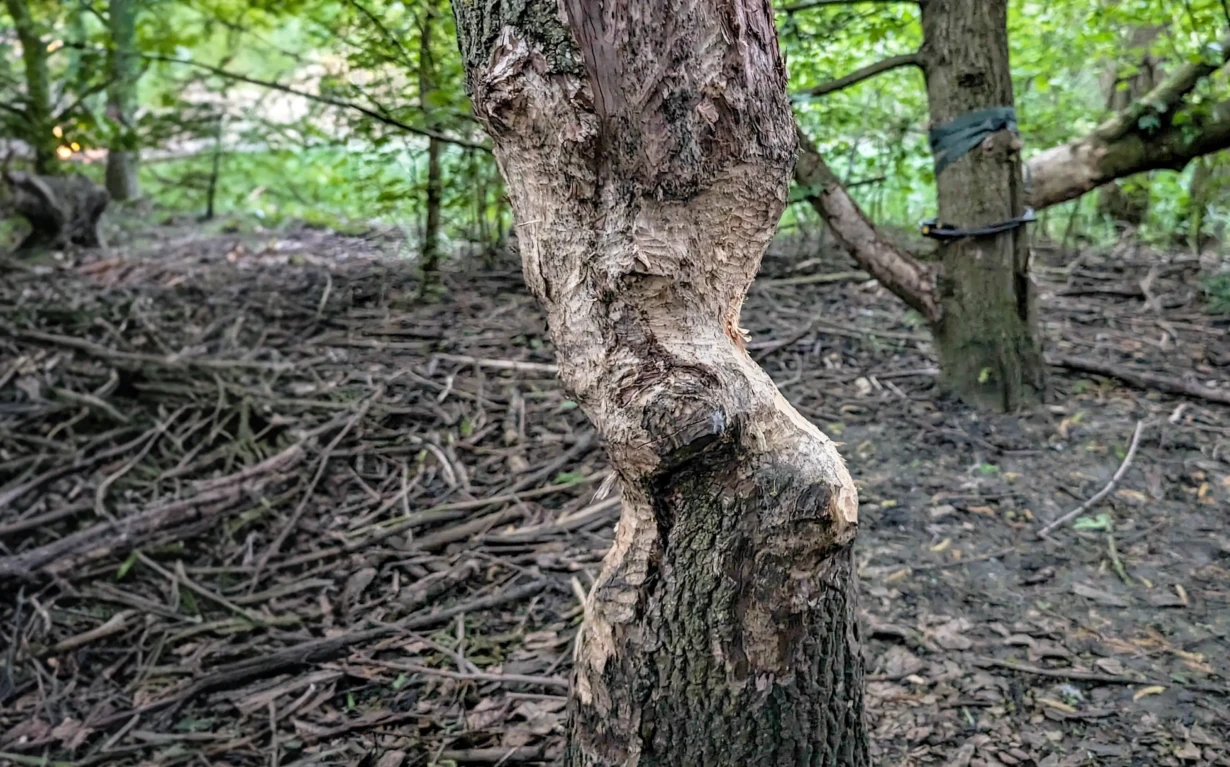
Beavers and Trees: Are they a threat?
Since we started the project, we’ve been asked on many occasions about Beavers and ‘tree damage’. Beavers and trees evolved together long before we as a species existed, and all of our native trees have evolved to be coppiced by Beavers and grow again from the base, a sight we’re just no longer used to since we exterminated this native species just over 400 years ago. A blink of an eye in evolutionary timescales.
When Beavers fell trees for food and building supplies, they introduce dynamism and variation in a habitat, with pulses of light reaching the aquatic and terrestrial habitat below, increasing chances for new flora and fauna to get a start. This introduces a mosaic of constantly changing microhabitats into ecosystems, bringing more life and energy. Fresh new foliage growth as the tree regrows brings a varied vegetation age and physical structure. Our habitats were not designed to be static or on an uninterrupted journey towards closed canopy woodland. Large herbivores and keystone species such as Beavers would have been constant agents of change.
The introduction of such dynamism, and dead wood, one of the richest habitats for biodiversity, into wetland ecosystems makes them a valuable carbon sink, a refuge for fish and other wildlife as well as slowing the flow of water alleviating pressure in times of flood and preserving groundwater in times of drought.
Paradise Fields is going to see a lot of ‘tree damage’ we are totally unused to in the coming years. We just need to reframe how we look at that. And see the bigger picture and long term benefits of putting these ecosystem engineers back in the driving seat.